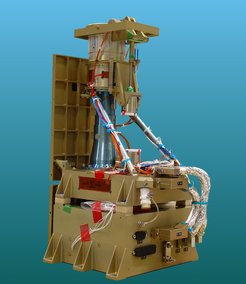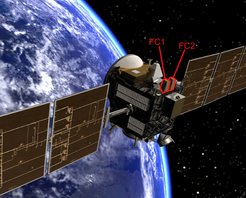The Camera System – Dawn's Eyes

The mission’s success critically depends on the two cameras, the “eyes” of the space probe. The images taken by the cameras help navigate the space probe safely to its destination and into a safe orbit around Vesta and Ceres. In addition, scientists can only characterize Vesta and Ceres with the help of detailed images. The space probe is therefore equipped with two identical cameras, Framing Camera 1 (FC1) and Framing Camera 2 (FC2). Should one of the cameras fail during the mission, the other can replace it. The mission itself would not be endangered.
In the asteroid belt several tasks await the cameras: They will determine the size and shape of Vesta and Ceres, obtain the necessary data for topological maps, look for moons in the surroundings of Vesta and Ceres as well as for cracks or other signs of past volcanic activity on the surface. Apart from that the cameras allow inferences about the rough mineralogical composition of both asteroids. The light, that every type of rock reflects into space, is like a fingerprint: It consists of characteristic wavelengths that allow the identification of the type of rock.
In order to identify these wavelengths as precisely as possible, the cameras each contain a filter wheel with seven filters. Each filter picks out a different wavelength interval from the reflected light – and thus creates an image in a certain color.
Before the light passes the filter wheel it enters a baffle that shades for stray light. The camera head contains the filter wheel and the CCD-chip with the respective Front End Electronics. Two radiators cool the CCD down to -60 degrees Celsius.
The Cameras in Numbers
Exposure times: 1 millisecond to 3.5 hours
Field of vision: 5.5 dregrees times 5.5 degrees
Memory: 8 GBit dRAM
CCD-sensor: 1024 pixel times 1024 pixel
Filter wheel: seven narrow-band filters and one clear filter
Partners
The camera system was developed and built under the leadership of the Max-Planck-Institute for Solar System Research. The Institute for Planetary Research of the German Space Agency DLR provided the Front End Electronics as well as the CCD. The Institute of Computer and Communication Network Engineering provided the main electronics of the cameras. The project was financially supported by the Max Planck Society, DLR, and NASA/JPL. During the mission the cameras will be operated by scientists from the Max Planck Institute for Solar System Research.


